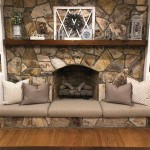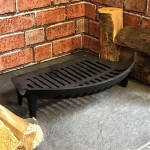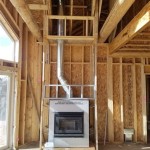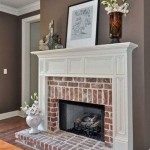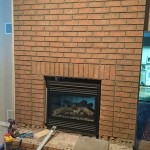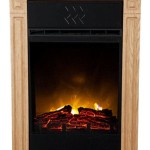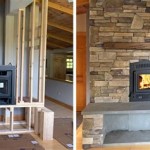Traditional Fireplace Mantels and Surrounds: A Timeless Architectural Element
Traditional fireplace mantels and surrounds represent a confluence of functionality and artistry, serving as a focal point in living spaces for centuries. Their enduring popularity stems from their ability to enhance the visual appeal of a room while providing a sense of warmth, comfort, and historical connection. These architectural elements are not merely decorative; they are integral to the overall design aesthetic and can significantly influence the perceived value and character of a home. Understanding the nuances of traditional fireplace mantels and surrounds is essential for homeowners, interior designers, and architects seeking to create spaces that exude elegance and timelessness.
The term "traditional" in this context encompasses a broad range of styles and periods, drawing inspiration from historical precedents such as the Georgian, Victorian, Federal, and Renaissance eras. Each style possesses distinct characteristics in terms of materials, ornamentation, and overall design. Replicating or adapting these historical styles requires careful attention to detail and a deep appreciation for the craftsmanship and aesthetic sensibilities of the past.
A fireplace mantel is the shelf above the fireplace opening, traditionally used for displaying decorative objects. The surround encompasses the area surrounding the firebox, often constructed from materials such as wood, stone, or marble. Together, the mantel and surround create a unified architectural feature that frames the fireplace opening and integrates it seamlessly into the room's design.
The evolution of fireplace mantels and surrounds reflects changes in architectural styles, heating technology, and social customs. In earlier periods, fireplaces were primarily functional, serving as the primary source of heat for homes. As heating systems became more efficient, the fireplace transitioned from a purely utilitarian feature to a more decorative element. The mantel became a platform for showcasing personal possessions, artwork, and family heirlooms, transforming the fireplace into a symbol of domesticity and social status.
Choosing the right traditional fireplace mantel and surround involves careful consideration of several factors, including the architectural style of the home, the size and proportions of the room, and the desired aesthetic effect. It is also essential to select materials that are durable, fire-resistant, and aesthetically pleasing. The installation process requires precision and expertise to ensure that the mantel and surround are properly aligned and securely attached to the fireplace structure.
Key Considerations in Selecting a Traditional Fireplace Mantel and Surround
Selecting a traditional fireplace mantel and surround requires a comprehensive understanding of various factors. The following key points address some crucial aspects to consider during the selection process:
1. Architectural Style and Historical Context: The first consideration should always be the existing architectural style of the home. A Georgian-style home, for instance, would ideally feature a mantel and surround that reflect the clean lines, symmetry, and classical detailing characteristic of that period. Common Georgian features include dentil molding, fluted pilasters, and restrained ornamentation. Victorian homes, on the other hand, often showcase more elaborate designs with intricate carvings, ornate moldings, and rich, dark wood finishes. Federal-style mantels emphasize elegance and refinement, incorporating elements such as delicate swags, urns, and tapered columns. Understanding the historical context of the home's architecture is crucial for selecting a mantel and surround that complements the overall design and enhances its authenticity.
Matching the mantel to the home's architectural style ensures a cohesive and harmonious aesthetic. A mismatch can create a jarring effect and detract from the overall appeal of the room. Consulting with an architect or interior designer who specializes in historical preservation can be invaluable in making informed decisions about style and materials.
Furthermore, it's crucial to research the original fireplace designs prevalent during the home's construction period. Local historical societies, architectural archives, and antique shops can provide valuable insights into the styles and materials that were commonly used in the region. This research can help to inform the selection process and ensure that the chosen mantel and surround are historically accurate and appropriate for the home.
2. Material Selection and Durability: The choice of materials for a traditional fireplace mantel and surround is paramount, not only for aesthetic reasons but also for safety and durability. Common materials include wood, stone (such as marble, limestone, and granite), and cast stone. Each material offers unique advantages and disadvantages in terms of appearance, cost, and maintenance requirements.
Wood mantels are often favored for their warmth, versatility, and ability to be carved and molded into intricate designs. Hardwoods such as oak, maple, and cherry are commonly used for their durability and resistance to wear and tear. However, wood is susceptible to heat damage and must be properly protected from direct contact with the fire. Applying a fire-retardant coating can help to mitigate this risk and prolong the life of the mantel.
Stone mantels offer a timeless elegance and exceptional durability. Marble, with its luxurious veining and polished surface, is a popular choice for formal living spaces. Limestone provides a more understated and natural look, while granite offers exceptional resistance to heat and scratches. Stone mantels are relatively low-maintenance and can withstand the rigors of daily use.
Cast stone is a manufactured material that replicates the look and feel of natural stone at a lower cost. It is made from a mixture of cement, aggregates, and pigments, and can be molded into a variety of shapes and textures. Cast stone mantels are durable, fire-resistant, and require minimal maintenance. They are a good option for homeowners who want the look of natural stone without the high price tag.
3. Size and Proportion: The size and proportion of the fireplace mantel and surround must be carefully considered in relation to the overall dimensions of the room. A mantel that is too large or too small can appear out of place and detract from the room's aesthetic balance. The height and width of the mantel should be proportional to the height and width of the fireplace opening, as well as the height of the ceiling and the size of the wall on which the fireplace is located.
In general, larger rooms can accommodate larger mantels, while smaller rooms require more compact designs. The depth of the mantel shelf should also be considered, as it needs to be wide enough to accommodate decorative objects without obstructing the view of the fire. It is helpful to create a scaled drawing or mockup of the mantel and surround in the room to visualize its impact on the space. This will help to ensure that the chosen design is appropriately sized and proportioned.
Exploring Traditional Fireplace Mantel Styles
The realm of traditional fireplace mantels encompasses a variety of distinctive styles, each with unique characteristics. Examining some of the prevalent styles provides a deeper understanding of historical influences and design aesthetics:
Georgian: Originating in 18th-century England, Georgian fireplace mantels are characterized by their simple elegance, symmetry, and classical proportions. They often feature fluted pilasters, dentil molding, and restrained ornamentation. The use of light-colored woods, such as painted pine or mahogany, is common. Georgian mantels evoke a sense of refined sophistication and timeless appeal.
Victorian: Victorian fireplace mantels, popular during the 19th century, are known for their ornate details, intricate carvings, and rich, dark wood finishes. They often incorporate elements such as brackets, scrolls, and floral motifs. The use of marble or slate for the surround is also common. Victorian mantels reflect the opulence and grandeur of the Victorian era.
Federal: Federal fireplace mantels, prevalent in the United States during the late 18th and early 19th centuries, emphasize elegance and refinement. They typically feature delicate swags, urns, and tapered columns. The use of lighter woods, such as cherry or maple, is common. Federal mantels evoke a sense of neoclassical grace and sophistication.
Renaissance: Inspired by the Italian Renaissance, these mantels showcase elaborate carvings, intricate moldings, and classical motifs. They often incorporate elements such as columns, pediments, and friezes. The use of marble or limestone is common. Renaissance mantels reflect the grandeur and artistic achievement of the Renaissance period.
Installation and Maintenance
Proper installation is crucial for ensuring the safety and longevity of a traditional fireplace mantel and surround. Incorrect installation can lead to structural problems, fire hazards, and aesthetic imperfections. It is highly recommended to hire a qualified professional with experience in fireplace installation to handle the project.
The installation process typically involves several steps, including preparing the fireplace opening, attaching the surround to the wall, and securing the mantel shelf. The installer must ensure that the mantel and surround are properly aligned and level, and that all connections are secure. It is also essential to follow local building codes and safety regulations.
Once installed, a traditional fireplace mantel and surround require regular maintenance to keep them looking their best. Dusting the mantel and surround regularly with a soft cloth is important to prevent the buildup of dirt and grime. Wood mantels may require occasional polishing or waxing to protect the finish. Stone mantels can be cleaned with a mild detergent and water. It is important to avoid using harsh chemicals or abrasive cleaners that can damage the surface of the materials.
Regular inspections are also important to identify any signs of damage or deterioration. Cracks, chips, or loose joints should be repaired promptly to prevent further problems. If the fireplace is used frequently, it is important to have it inspected and cleaned annually by a qualified professional to ensure that it is functioning safely and efficiently.
By carefully considering these factors and investing in proper installation and maintenance, it is possible to enjoy the beauty and warmth of a traditional fireplace mantel and surround for many years to come. The fireplace will continue to be a focal point in the home, a source of comfort and enjoyment for family and friends.

53 Best Fireplace Mantel Designs To Ignite Your Creativity Classic White Mantels

Modern Ember Lenwood Traditional Wood Fireplace Mantel Surround Kit Unfinished 48 Inch Opening Classic Design Tiered Frame Molding Surrounds Mantels

Fremont Wood Fireplace Mantel Mantels Direct

Types Of Fireplaces And Mantels The Home Depot

Mantels Direct 78 125 In W X 51 H White Poplar Traditional Fireplace Surround The Department At Com

Pearl Mantels 48 In X 42 Crisp White Full Surround Interior Opening Fireplace Mantel Rps48515d The Home Depot

Mantels Direct 74 5 In W X 53 H White Poplar Traditional Fireplace Surround The Department At Com

Traditional Fireplace Mantel Cornice Solus Stone Concrete

Lenwood Wood Fireplace Mantel Surrounds Traditional

Wooden Fire Surrounds Bespoke Fireplaces Ivett Reed
Related Posts

